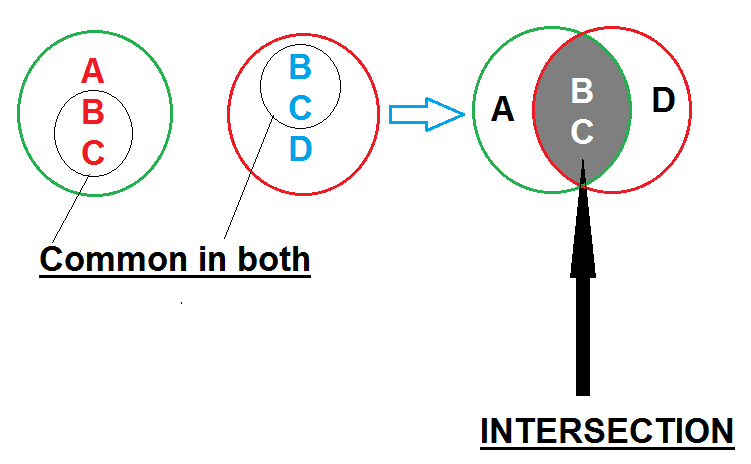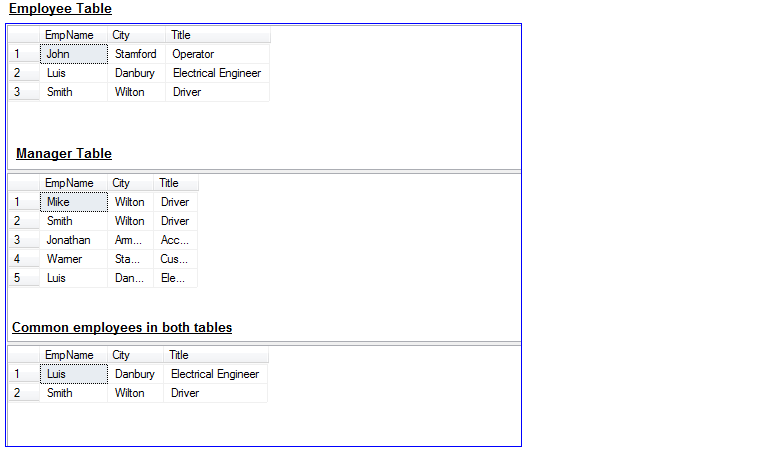
February 26, 2020 11:06 by
 Peter
PeterSometimes, we have a scenario when we want to get a common set of rows from 2 different result sets. For example, we have 2 queries and both returns employees record. If we want to find who all employees are present in both result sets, that time we can use INTERSECT to get the result. Below is the graphical representation of how INTERSECT works.

If you see in the above graphical representation, the left 2 circles have the B and C letters in common. The left side picture shows how the 2 circles have B and C letters common which is nothing but an intersection.
Now let's see how it works in the database.
So we are going to create 2 tables, EmpTable and ManagerEmp and then we will insert records in them.
CREATE TABLE EmpTable(EmpName VARCHAR(50),City VARCHAR(50),Title VARCHAR(50))
CREATE TABLE ManagerTable(EmpName VARCHAR(50),City VARCHAR(50),Title VARCHAR(50))
INSERT INTO EmpTable
SELECT EmpName='John',City='Stamford',Title='Operator'
INSERT INTO EmpTable
SELECT EmpName='Luis',City='Danbury',Title='Electrical Engineer'
INSERT INTO EmpTable
SELECT EmpName='Smith',City='Wilton',Title='Driver'
INSERT INTO ManagerTable
SELECT EmpName='Mike',City='Wilton',Title='Driver'
INSERT INTO ManagerTable
SELECT EmpName='Smith',City='Wilton',Title='Driver'
INSERT INTO ManagerTable
SELECT EmpName='Jonathan',City='Armonk',Title='Accountant'
INSERT INTO ManagerTable
SELECT EmpName='Warner',City='Stamford',Title='Customer Service'
INSERT INTO ManagerTable
SELECT EmpName='Luis',City='Danbury',Title='Electrical Engineer'
Now run below the query to find out the common employees in both tables.
SELECT * FROM EmpTable
SELECT * FROM ManagerTable
-- INTERSECTION
SELECT * FROM EmpTable
INTERSECT
SELECT * FROM ManagerTable
Here is the output.
If you see below, in both the "EmpTable" and the "ManagerTable" tables, Luis and Smith both are employees. To join these 2 queries with INTERSECT, it gave these 2 names.

One thing is to remember here is both the tables/result sets should have the same columns and the same datatype for those columns, otherwise, it may give you "Conversion failed when converting...." if the data type does not match.
